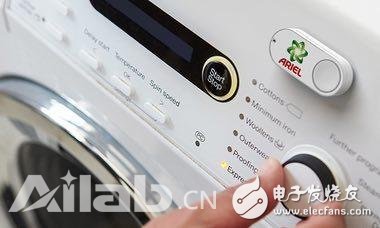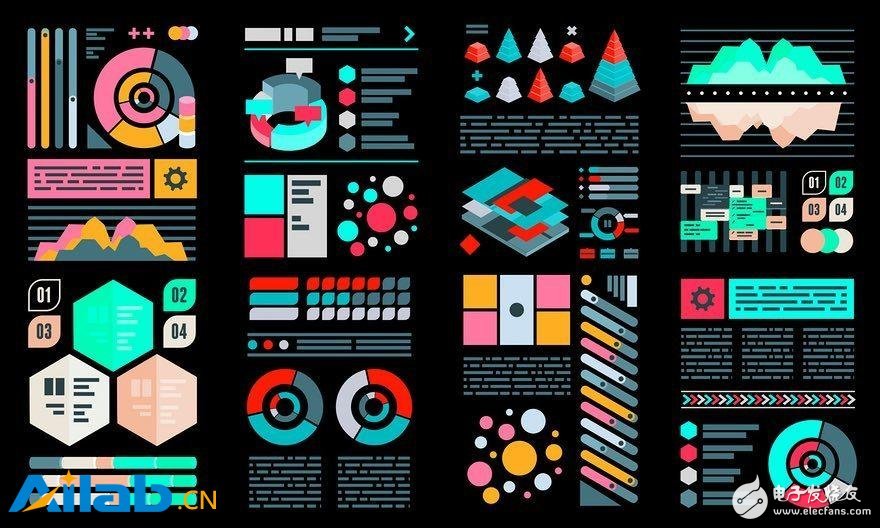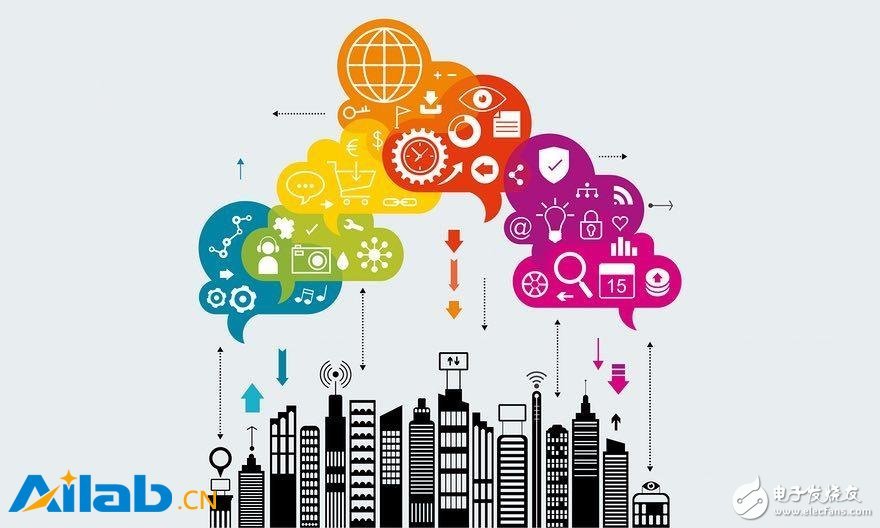According to foreign media reports, IoT technology seems to be overwhelming at present. It helps us order goods, analyze data and even build smart cities. Industry insiders promise that IoT technology can benefit everyone, but is this really the case?
In San Francisco, USA, a young engineer wants to "optimize" his life with sensors that track heart rate, breathing and sleep cycles. In Copenhagen, Denmark, a moving bus transmits its location and number of passengers to the municipal traffic information network every two minutes, effectively planning the traffic lights at the three intersections ahead, leaving the driver unimpeded. In Davao, Philippines, a rotatable webcam overlooks the warehouse of a fast food restaurant, monitoring everyone who enters and exits.

This is what we call the “Internet of Things†– linking all the different devices together via the web. Technical expert Mike Kuniavsky is a pioneer in this idea and describes it as "embedded computing devices and data communications distributed throughout the environment." I prefer its intent: to colonize (integrate control) daily life through information processing.
Although the term "colonization" seems a bit aggressive, with the emergence of the Internet of Things, all kinds of human ambitions will indeed be met. The Internet of Things is not a single technology. The connection between the various devices, services, suppliers and all the content involved must reach the same ultimate goal: collecting data that can then be used to measure and control the world around us.
If a project has such a high design plan for our daily lives, it is crucial to understand what its main idea is and what it is pursuing. Although there is no rule in the Internet of Things, quality can't be measured, but we can achieve more specific meaning through three-scale observation: our body ("self-quantification"), our home ("Smart House") and Our public space ("smart city"). Each scale shows the impact of the Internet of Things, and each level has different things to guide us.
At the personal level, the Internet of Things exists in the form of wearable biometric sensors. The simplest of these is the networked digital pedometer, which measures the walking distance of a person by calculating the number of steps and provides an estimate of the energy consumed during the activity. More sophisticated devices measure heart rate, breathing, skin temperature and even sweat.
In theory, if wearable biometric devices such as Fitbit and Apple Watche are designed to cater to the user's self-discipline, the purpose of colonizing the home environment through similar networked products and services is to provide a very different experience: Convenient. The goal of this "smart family" effort is to shorten the process between desire and desire to meet through equipment.
A perfect example is the gadget that Amazon sells, a one-click purchase tool called Dash Button. Many IoT devices are just traditional devices with network connectivity. Dash Button is the opposite, it can't exist without the Internet. Amazon's own description of the device and how it works is no better, so I'll repeat it here: "Amazon Dash Button is a Wi-Fi-connected device that can reorder your favorite products by pressing the button. To use the Dash Button, simply download the Amazon app from the Apple App Store or Google Play Store. Then, log in to your Amazon Prime account, connect the Dash Button to Wi-Fi, and select the item you want to reorder. The connection is successful, you can automatically place an order by simply pressing the Dash Button button.
In other words, this is a single-purpose electronic device, and each device can only be used for a single, specific product. Press the button when you need it again. This equipment can be used for your pet food, washing powder or bottled water to complete automatic ordering.

I will not deliberately dilute the value of similar products for users. This product has a certain value for users who need to take care of their elderly parents, for users who need to take care of infants and young children, and even for users who spend more than an hour buying boxed cat food. But compared to the gains Amazon has made, each user's revenue from the product is very good, of course, because with this gadget, you will never break the cat food. But at the same time, Amazon can get valuable data such as the time, location, frequency and intensity of the goods the user needs. This is an asset, and Amazon will use it in a variety of ways, including using this data to develop behavioral models that accurately map our desires for greater efficiency.
Furthermore, devices such as the Dash Button allow users to complete transactions with as little thinking as possible, even without having to click on the touch screen of the phone or tablet to place an order. This is all the exact data that the industry calls "transformation" because it is relentless: every checkbox is checked, and each input field is filled with the percentage of the last user transaction. The fewer steps in a transaction, the more likely people are to consume.
Product manufacturers are continually trying to eliminate these steps, hoping that one of their IoT products will become an indispensable part of everyday life like a smartphone. Recently, the development of the entire industry to "smart home" is only one aspect.
At present, this strategy is mainly focused on the so-called "smart speaker", and the first generation has entered the market, including well-known products including Amazon Echo and Google Home, each of which can become the core of the entire smart home. . Amazon Echo is a simple cylindrical speaker, while Google Home is an inverted oval. But in fact, it doesn't matter how the smart speaker looks, because its main function is the materialized "virtual assistant", providing users with a convenient and integrated way to access the many digital controls scattered throughout the home - from lighting And entertainment to safety, heating, cooling and ventilation system equipment and more.
Google, Microsoft, Amazon and Apple all have their own virtual assistants based on natural language speech recognition technology. Most virtual assistants are the name, sound, and personality of a feminine character. Because related research shows that users of all genders like to interact with women.
At first glance, such devices seem to be harmless. They just sit quietly on the edge of our consciousness, and people only interact with them when they need it. However, when we think about it carefully, we will find many problems.
Think about how Google Virtual Assistant works: You mention it to Italian food, according to an article in the New York Times, "Google Virtual Assistant will recommend some Italian restaurant ordering apps, such as OpenTable. Wait".
This example shows that while the recommendations provided by these virtual assistants are ostensibly neutral, they are recommendations based on many built-in assumptions, and many of us wonder if we need to scrutinize these assumptions.
For example, ask the restaurant owner and front desk staff about their views on OpenTable. You will quickly understand that user convenience is based entirely on increased workload, and OpenTable has all the relevant data. You can also learn that OpenTable intentionally cuts the number of reservations for each diners in the busy situation.
Therefore, sensible diners will not use OpenTable to make reservations, but by calling the restaurant. In contrast, Google Home uses the service by default.
This is not an accident. It reflects Google Home's design priorities, preset environments, and product ideas. For the entire smart home industry, it is primarily a homogenized group of young designers and engineers. More important than the homogenization between them is that they are different from others.
Most IoT devices are often designed by people who adapt to services such as Uber, Airbnb, and Apple Pay. For these people, the above services have entered their lives, and they believe that these services are commonplace. But statistics from the Pew Research Center in Washington, DC show that quite a few people have never heard of or used such services, but over time, they will become commonplace for everyone.
This way of interacting with networked information also brings other issues and challenges. For example, it is difficult for a user to determine whether a recommendation of a virtual assistant is a result of an objective search or a paid advertisement of a merchant. However, the main problem with virtual assistants is that it provides a meaningless approach to the world, and the desire for users to be reluctant to long-term depression is less important in the process leading to satisfaction.

The virtual assistant can listen to the voice of the environment and stand by in real time. As a voice interface that interacts with the user, they listen to the voice in the home to detect when the environment generates "keywords" that wake up the device. In this way, these devices are able to collect more data for advertising purposes or other commercial purposes.
Because the virtual assistant does not understand the environment we are in, it simply relies on keyword judgment, which leads to various funny situations. The National Public Broadcasting Network broadcasted a report on Amazon Echo, and various clues in the broadcast were interpreted by Echo as user commands, resulting in various confusions.
Users get some of the convenience of life from the virtual assistant, and their service providers get everything - all the value data about your life. Let us simply think about what we lost when the Internet of Things brought us some convenience. Are the restrictions imposed on us in the non-networked world really unanswerable? Is it really difficult to wait for the oven to warm up after going home? Is it worthwhile to give up a lot for remote control?
Most of us now know that our phones are constantly collecting information about our locations and activities. However, we often overlook that every block in the current collection of information is also collected in real time, often referred to as the "smart city." If the wearable device is self-mastered and understood by the user, and the purpose of the smart home is convenient, then the ultimate goal of the smart city is to control and use space, energy and other resources more effectively through real-time control.
A variety of network information gathering devices are being deployed in public, including CCTV cameras, advertising screens with biometric sensors and vending machines. There is also an indoor micro-location system called "Beacon" that, when combined with a smartphone application, sends information about nearby products and services to users.
In the urban space, there are countless pieces of information at all times. Our past has left traces of information. Every square meter of seemingly calm space has generated various kinds of user data. No one knows how to use these. information. At the city level, the guiding ideology of the Internet of Things is the top priority.
Siemens Engineering's definition of smart city provides the most vivid and accurate explanation: “From now on, the city will have countless autonomous, intelligent information systems with complete data on user habits and energy consumption. And can provide the best service... The goal of such a city is to optimize the regulation of urban resources through an autonomous information system."
There is such a philosophical stance that the world is completely known in principle, and the various things involved are readable, and the relationship between them can be completely coded through the technical system without any deviation. When this concept is used in urban affairs, it actually means that there is a single correct solution for everything. This solution can be achieved through a properly input technology system and will not be based on public policy. Produce any distortion.
In fact, every aspect of this philosophy is questionable. The most obvious thing is that it is not true to say that everything is completely known. Even if sensors can be deployed anywhere in a city, they can only capture information that can be observed. In other words, they will not be able to grasp all the information needed to make a sound policy.
In addition, the inherent bias of human existence inevitably discolors the collected information data. For example, people unconsciously generate data that is conducive to their perception. Under pressure, a police officer responsible for “making a quota plan†may focus on the violations she would normally ignore. Conversely, her commander may be personally under the pressure of making the city safer. The felony of the attack is classified as a simple misdemeanor. This is especially true when money or other incentives depend on achieving performance thresholds.
There are also questions to explain. Advocates of smart cities seem to believe that each of human behavior has a single significant meaning that can be remotely identified and responded by automated systems without any possibility of error. The most extreme advocates of this approach seem to believe that any data collected from the real world can be interpreted uniformly.
But data is never completely "fair". Facts are prone to bias because of the way data is collected. When the installation height of the sensor is changed by a few meters, different air pollution values ​​can be generated. A slight change in the classification of criminal behavior can change the community's perception of risk. Anyone who is engaged in voting knows how sensitive the results are to the wording of the survey.
All known information processing systems, existing levels of human cognition, and current organizations are contrary to this so-called "perfect". In fact, no matter how powerful a computing system is, any experienced engineer will never use it to represent perfection.
In addition, the concept of packaging a solution for a complex city problem is also confusing. A city is often composed of a variety of preferred individuals and communities, and it is impossible to fully satisfy everyone at the same time.
If there is such a solution that can be implemented algorithmically, it is completely untrustworthy. Assuming that there is such a balanced algorithm that automatically allocates all kinds of resources, it will be very convenient. However, passing the municipal management decision to the algorithm seems to be too trusting to write the algorithm.
Quite simply, we need to understand that developing such an algorithm designed to guide the distribution of citizens' resources is itself a political act.
It is also difficult to apply sensitive issues such as resource allocation to policy recommendations derived from computational models. Some of these results may be artificially intervened, covered by weighted decision factors, or directly ignored.
In fact, the perfect ability implied in the wording of most smart cities is completely out of proportion to the technical systems we know. It is not based on urban operations. So, although the Internet of Things offers many new possibilities, no matter how much convenience we are told about the Internet of Things and how much we control ourselves, we should treat the entire field with suspicion.
Multi-Port Usb Charger,5V2A Usb Charger,Mobile Phone Charger,Multi Ports Usb-A Charging Hub
shenzhen ns-idae technology co.,ltd , https://www.best-charger.com